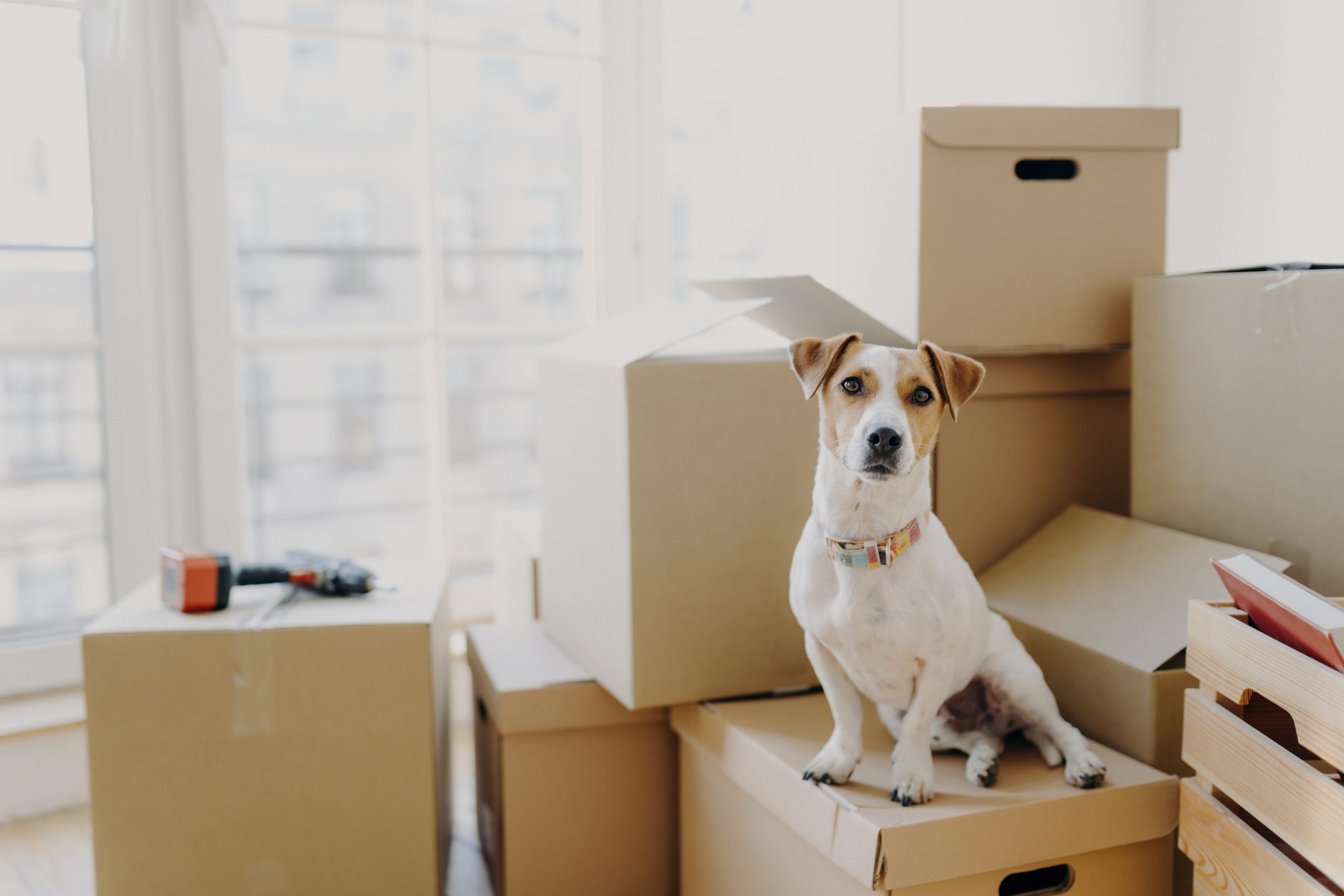You Ask, We Answer: What Is the Best Way to Move with Pets?
By the time your Calcagni agent has helped you navigate buying a house in Connecticut or selling your current home, your mind has probably already turned to the arduous task of packing for moving day. And while packing for and scheduling your move are obviously a crucial part of readying for your next place to live, prepping your pets for moving can be just as critical. We’ve compiled some helpful hints on the best way to move with pets to ensure they—and you!—are less stressed before, during and after you move—so you can get down to the business of loving where you now live.
Prepare a pet overnight kit
Food, water, a favorite toy or two and some kitty litter, if your fur baby requires it: Preparing a pet overnight kit will help make the first night (and subsequent couple of days) in your new home easier for you and your pet by keeping necessities in one safe place. If treats are allowed in your pet’s usual repertoire, be sure to include those, as well; they’ll come in handy for rewarding good behavior, like using the litter box or the new yard or sidewalk in their new surroundings.
Inform your vet of your impending move
Be sure to contact your vet prior to your move and ask for your pet’s records; having a copy of any treatments, vaccinations and refills on medications will make your move easier in the long run—and will prevent panic should your pet need their meds and you don’t have a relationship with a new vet just yet. Plus, if you are planning on boarding your pet during your move or want to sign your dog up for doggie daycare in your new location, they’ll need to be up to date on all their vaccinations in order to do so.
Don’t be afraid to ask your vet about any possible behavioral changes you can expect to see in your pet as they acclimate to their new home, and seek their best advice to help combat these behaviors. Knowing what is “normal” in a new space and what to do about it will help you and your beloved pet feel more in control.
In addition to notifying your vet, be sure to update any microchip or license information, as well—always a good idea to help keep your pet safe and easier to bring back to you, should they get ever lost.
Find a babysitter for moving day
If at all possible, consider having a “babysitter” for your pet for moving day, whether it’s doggie daycare, boarding or a trusted friend or family member. Moving is stressful for everyone in the family, and your pet is no exception. Pets are incredibly intuitive and sensitive—and they’re also creatures of habit. Having their surroundings put away in boxes, watching strangers move about the house and trying to understand the hectic energy that will no doubt be a part of any moving day can cause pets anxiety—and that can lead to skittish or destructive behavior, including trying to sneak out of open doors when we’re otherwise occupied.
Before bringing your pets back to your new home, try to unpack as much as possible. This will help cut down on the disruption your pet feels. Setting up your cat’s favorite perch or your dog’s bed that smells like them (and your old home) can bring a sense of comfort to your pet in their new surroundings.
If you can’t find a babysitter for your pet, close them in a quiet room and don’t allow movers in that room to prevent your pet from escaping. Make sure the room is a safe temperature and that your pet has access to clean water. If your dog is crate trained, put them in the crate within the quiet room to create a den-like cozy space for them. Try to take dogs out for walks at their normal times to inject a little routine into their day to help alleviate their stress (and yours, too!).
Give your pet a preview
If at all possible, give your pet a preview of where they’ll be living. If it’s not too stressful for your pet to be in a car, drive them over to the new location a few times and leave the windows open to give them a chance to take in the smells. If you’re within walking distance of your new Connecticut home, walk your dog over a few times to get them used to the smells on the ground and if possible, let them sniff around the yard or front porch. Any acclimation you can encourage ahead of time will help your pet feel less anxiety about living in a new location.
And don’t forget the fish, birds and guinea pigs
Moving isn’t just stressful for dogs and cats. Guinea pigs, fish and birds are also creatures of habit and can become very anxious about their surroundings being altered. Move guinea pigs (or hamsters, gerbils…) in clean, small containers that allow them to feel safe, like their current cages or containers. If possible, move fish in their current water and even if your bird is prone to sitting upon your shoulder, always transport it in its cage.
Moving is a big deal for everyone in your family, and your pets are no exception. But with a little preparation, a sense of humor and a lot of patience, your pets will love your new Connecticut home as much as you do!



